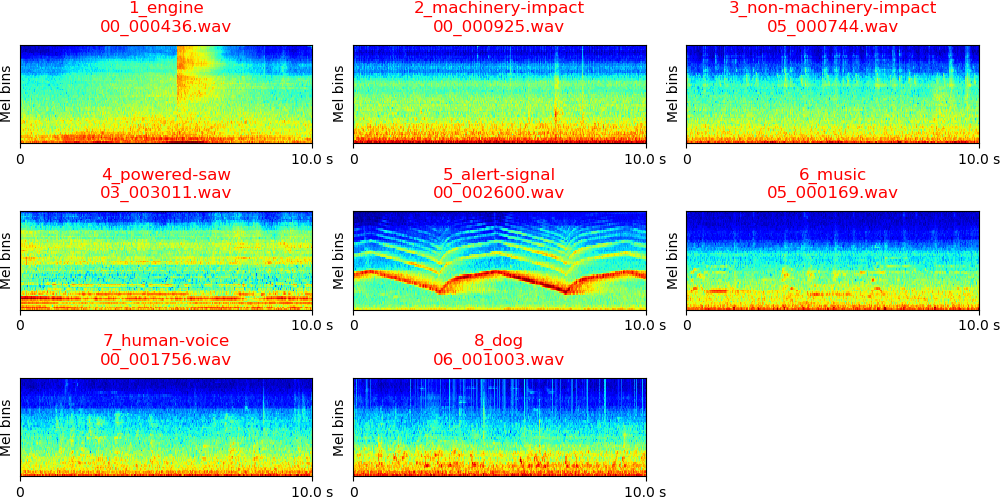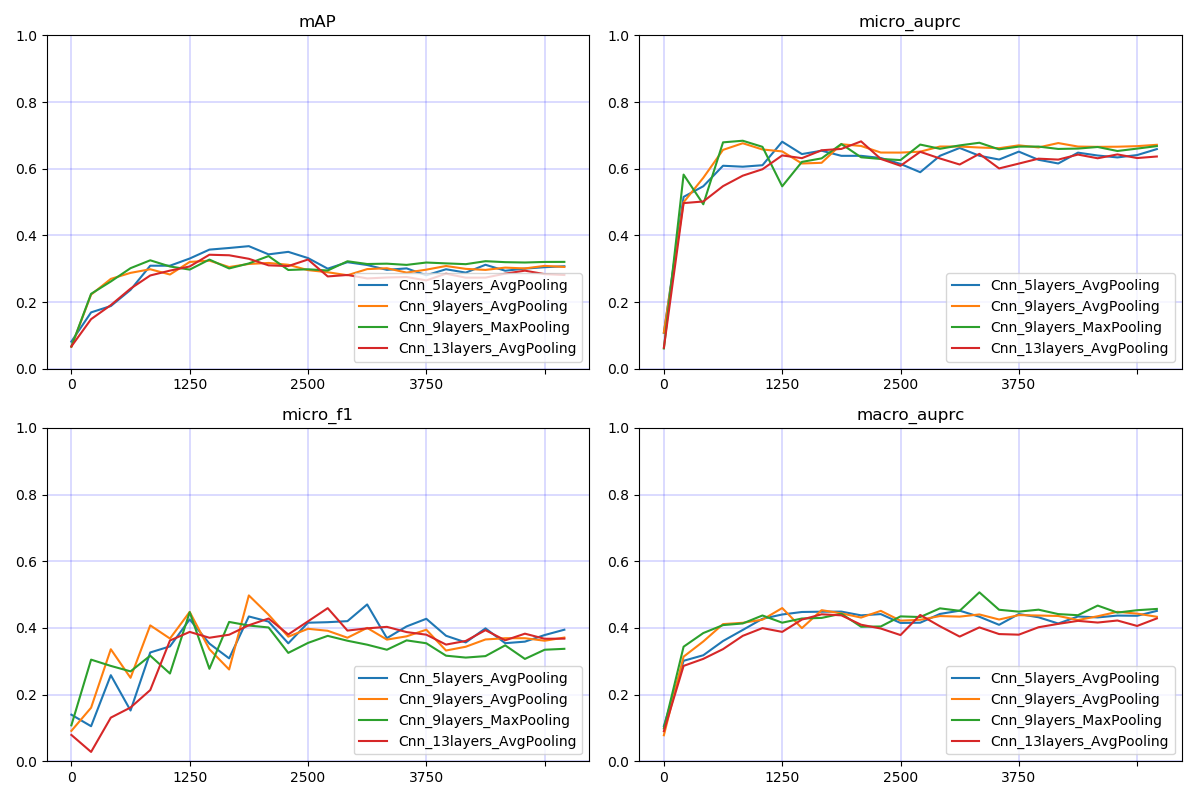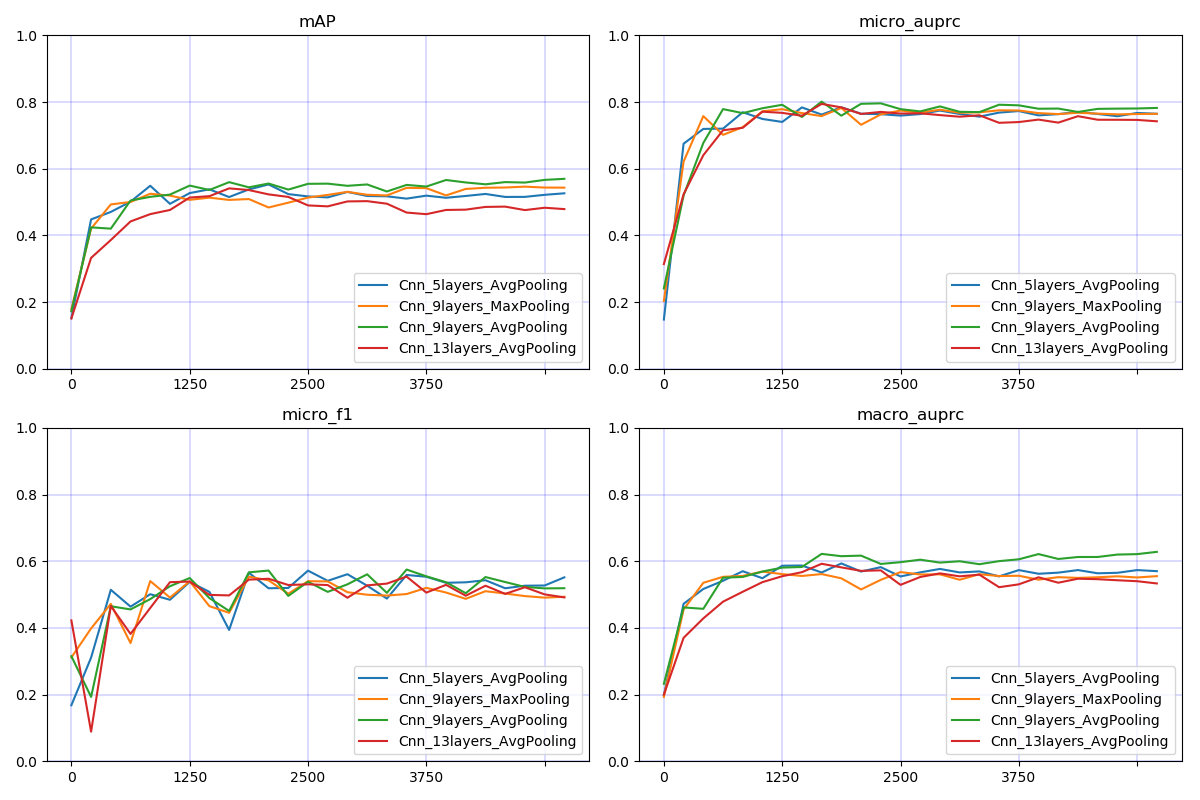DCASE2019 Task5 Urban Sound Tagging is a task to predict tags of audio recordings recorded from urban acoustic sensors. The task includes a fine-grained classification of 23 sound classes and a coarse-grained classification 8 sound classes. More description of this task can be found in http://dcase.community/challenge2019/task-urban-sound-tagging.
The dataset can be downloaded from http://dcase.community/challenge2019/task-urban-sound-tagging. All audio recordings are approximately 10-second, single-channel and with a sample rate of 44.1 kHz. The statistic of the data is shown below:
| Train | Validate | Evaluation | |
|---|---|---|---|
| Num. | 2351 | 443 | - |
The log mel spectrogram of audio recordings are shown below (audios from validate folder):
0. Prepare data
Download and upzip data, the data looks like:
dataset_root ├── train (2351 files) | ├── 01_000006.wav │ └── ... ├── validate (443 files) | ├── 00_000066.wav │ └── ... ├── annotations.csv ├── dcase-ust-taxonomy.yaml └── ...
1. Requirements
python 3.6 + pytorch 1.0
2. Then simply run:
$ Run the bash script ./runme.sh
Or run the commands in runme.sh line by line. The commands includes:
(1) Modify the paths of dataset and your workspace
(2) Extract features
(3) Train model
(4) Inference
We apply convolutional neural networks using the log mel spectrogram audio as input. The outputs represents the presence probability of sound classes. To train a CNN with 9 layers and a mini-batch size of 32, the training takes approximately 200 ms / iteration on a single card GTX Titan Xp GPU. The model is trained for 5000 iterations. The training looks like:
Load data time: 2.499 s Training audio num: 2351 Validation audio num: 443 ------------------------------------ ... ------------------------------------ Iteration: 5000 train mAP: 1.000 validate mAP: 0.360 Train time: 39.336 s, validate time: 5.301 s Model saved to /vol/vssp/msos/qk/workspaces/dcase2019_task5/models/main/logmel_64frames_64melbins/taxonomy_level=fine/holdout_fold=1/md_5000_iters.pth ------------------------------------ ...
The results of different models
This table shows the results of differetn CNN architectures. Baseline system is from [2].
The CNN9-I, which is 9-layer CNN with 2x2 average pooling performs better than other CNN models.
The fine results of different models are shown below.
The 9-CNN models perform slightly better than the 5-layer and 13-layer CNN.
The coarse results of different models are shown below.
The 9-CNN models perform slightly better than the 5-layer and 13-layer CNN.
This codebase provides a convolutional neural network (CNN) for DCASE2019 Task5 Urban Sound Tagging.
If this codebase is helpful, please feel free to cite the following paper:
[1] Qiuqiang Kong, Yin Cao, Turab Iqbal, Yong Xu, Wenwu Wang, Mark D. Plumbley. Cross-task learning for audio tagging, sound event detection and spatial localization: DCASE 2019 baseline systems. arXiv preprint arXiv:1904.03476 (2019).
If you met running out of GPU memory error, then try to reduce batch_size.
[2] https://github.com/sharathadavanne/seld-dcase2019
[3] Bello, J.P., Silva, C., Nov, O., DuBois, R.L., Arora, A., Salamon, J., Mydlarz, C. and Doraiswamy, H., 2018. SONYC: A system for the monitoring, analysis and mitigation of urban noise pollution. arXiv preprint arXiv:1805.00889.



